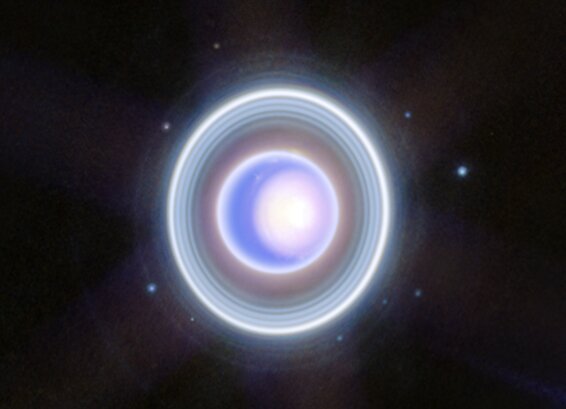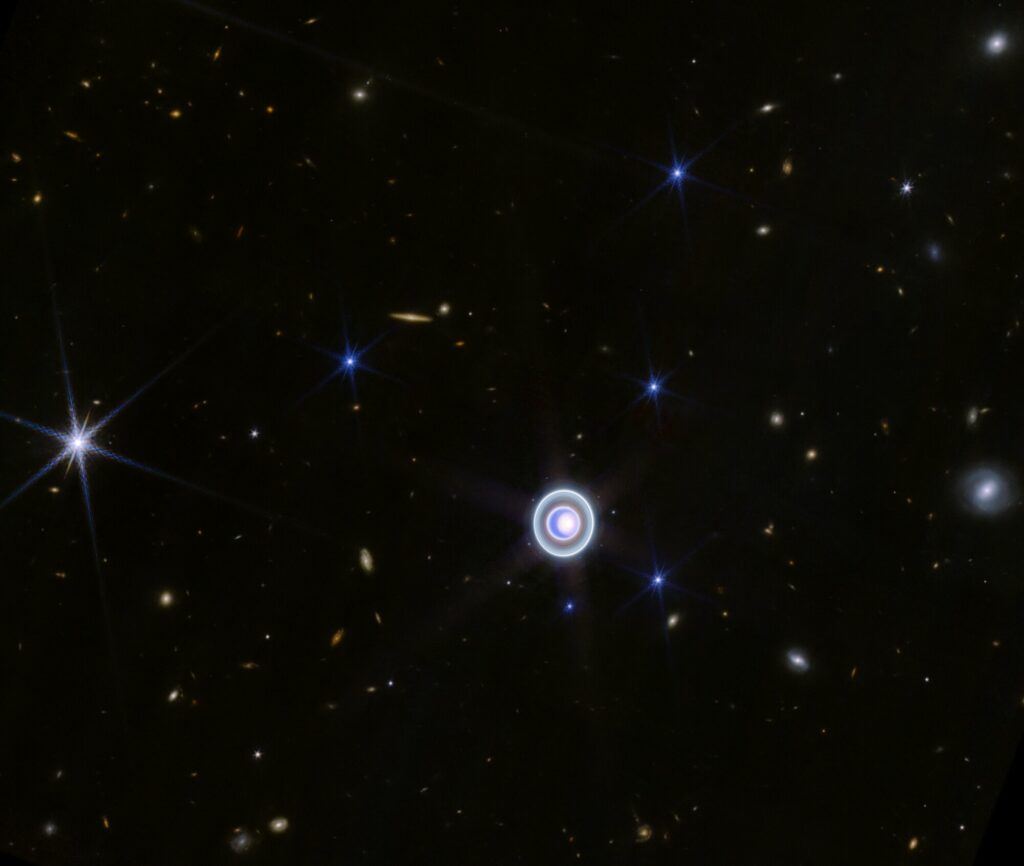Webb Celebrates the Holiday Season with the Ringed Beauty of Uranus.
The James Webb Space Telescope has recently focused its gaze on the distinctive and mysterious ice giant, Uranus, which rotates on its side. Webb has captured this dynamic celestial body, revealing its rings, moons, storms, and various atmospheric features, including a seasonal polar cap. This image builds upon a two-color version unveiled earlier this year by incorporating additional wavelength coverage, providing a more comprehensive and detailed view.

Utilizing its exceptional sensitivity, Webb skillfully captured both the faint inner and outer rings of Uranus, encompassing the elusive Zeta ring—the remarkably subtle and diffuse ring nearest to the planet. The telescope also provided imagery of many of Uranus’s 27 recognized moons, even discerning some smaller moons situated within the rings.
In the visible wavelengths observed by Voyager 2 during the 1980s, Uranus presented itself as a serene, solid blue orb. However, in infrared wavelengths, Webb is unraveling the intricacies of a peculiar and dynamic ice world, showcasing captivating atmospheric features. Among these features, the planet’s seasonal north polar cloud cap stands out prominently.
In comparison to the Webb image released earlier this year, the recent images offer enhanced visibility of certain details within the cap. These details include the bright, white inner cap and the dark lane located at the bottom of the polar cap, toward the lower latitudes. Additionally, several bright storms are visible near and below the southern boundary of the polar cap. The frequency and locations of these storms in Uranus’s atmosphere, as well as their potential correlation with seasonal and meteorological factors, remain subjects of exploration.

The visibility of the polar cap intensifies as Uranus tilts its pole toward the sun, approaching solstice and receiving increased sunlight. The planet is set to reach its next solstice in 2028, prompting astronomers to eagerly monitor potential alterations in the structure of these features.
Webb’s capabilities will play a crucial role in unraveling the seasonal and meteorological influences on Uranus’s storms, contributing to a better understanding of the planet’s intricate atmosphere. Given Uranus’s unique characteristic of spinning on its side at an inclination of approximately 98 degrees, it experiences the most extreme seasons in the solar system. For nearly a quarter of each Uranian year, the sun illuminates one pole, casting the other half of the planet into a prolonged, 21-year winter.
With Webb’s unparalleled infrared resolution and sensitivity, astronomers now observe Uranus and its distinctive features with unprecedented clarity. The detailed information, particularly regarding the close-up Zeta ring, will be invaluable in planning potential future missions to Uranus. Moreover, Uranus serves as a valuable proxy for studying the nearly 2,000 similarly sized exoplanets discovered in recent decades. This “exoplanet in our backyard” aids astronomers in comprehending the workings of planets of this size, their meteorology, and formation processes. This, in turn, contributes to a broader understanding of our own solar system within a larger cosmic context.
This article is republished from PhysORG under a Creative Commons license. Read the original article.
Do not forget to share your opinion with us to provide you with the best posts !



0 Comments